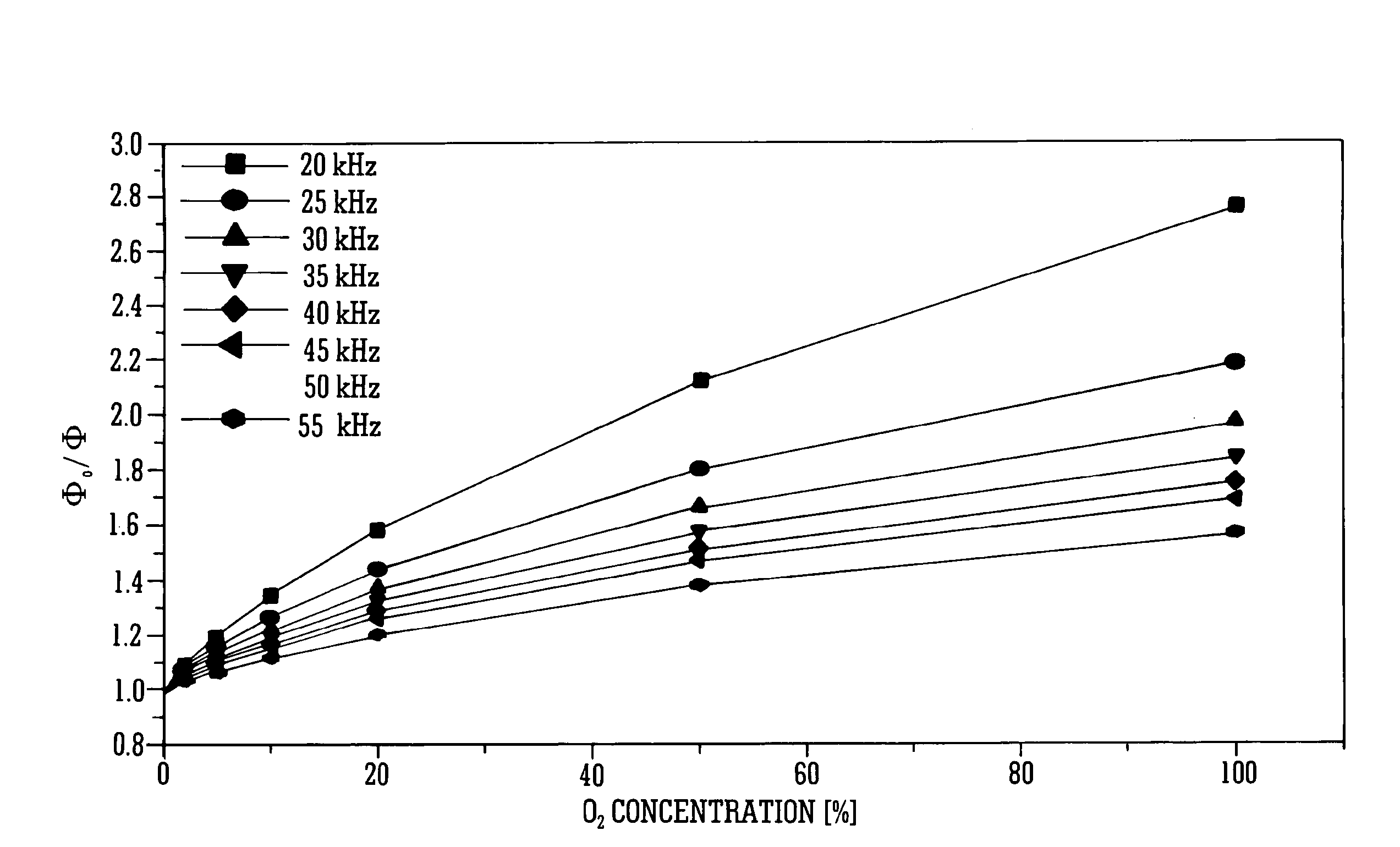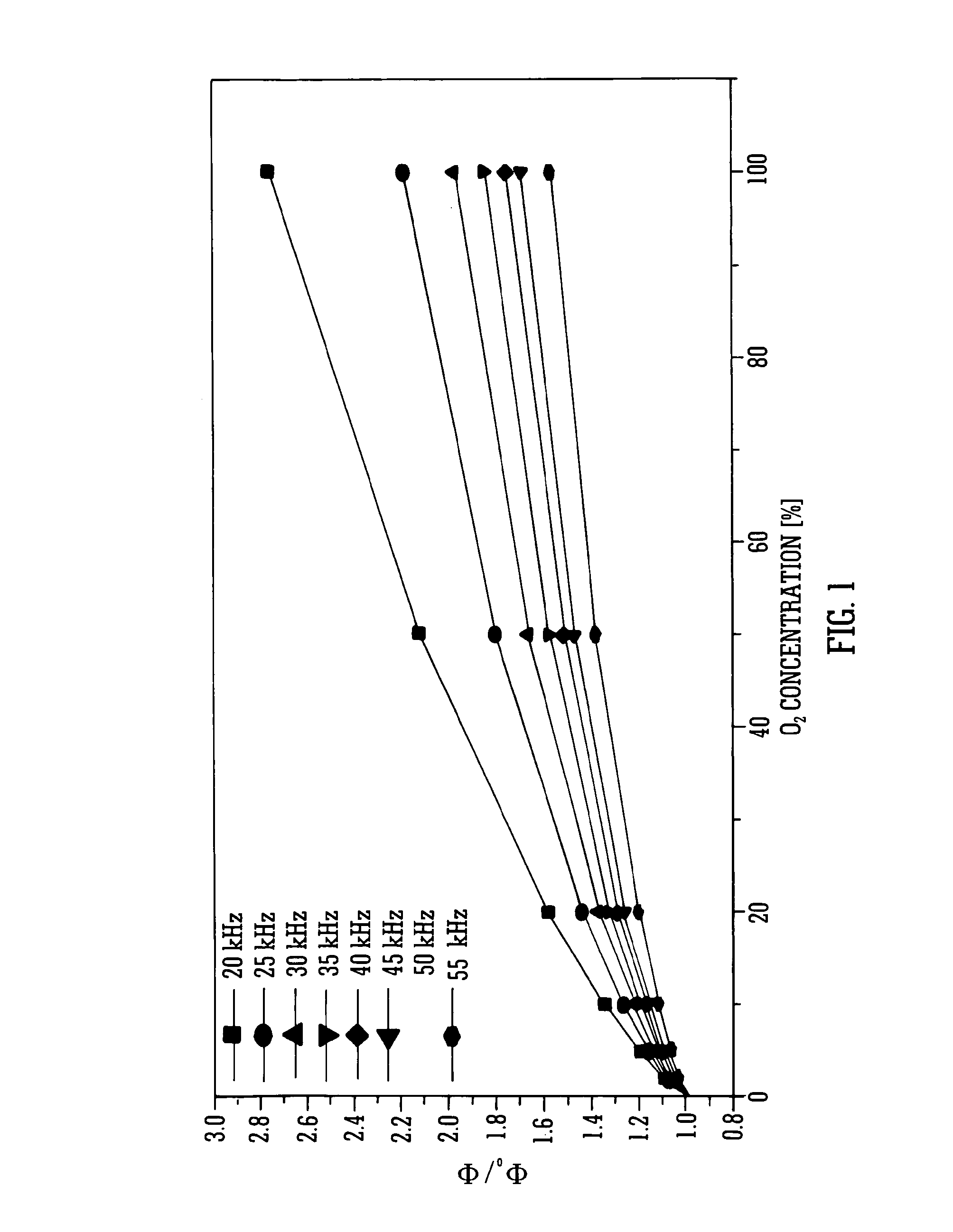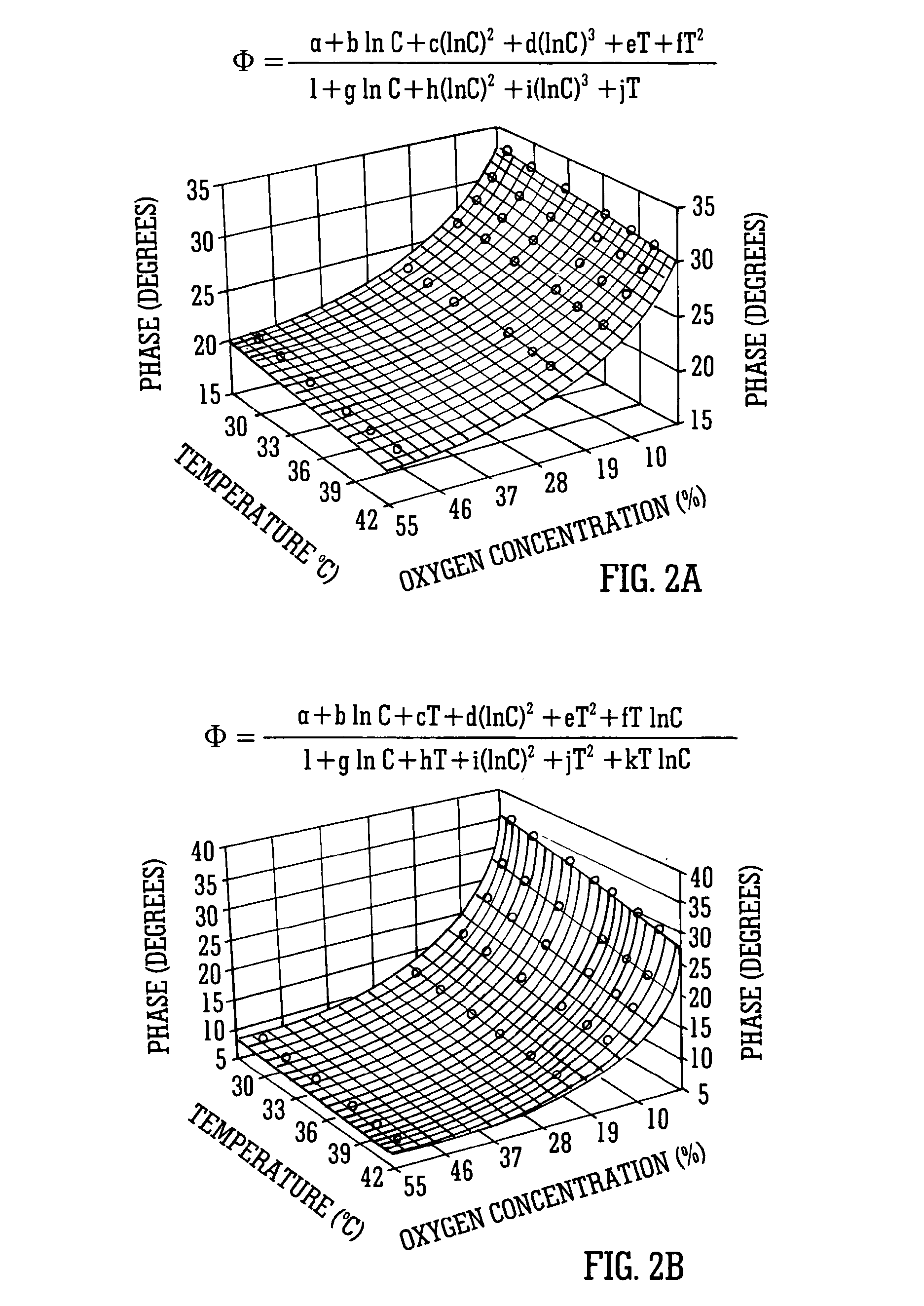Single element sensor with multiple outputs
a single element sensor and output technology, applied in the field of sensors, can solve the problems of inability to accurately compensate in real time for the effect of temperature changes on the response of optical sensors, cross-sensitivity of temperature sensors, and inability to accurately compensate in real time for the effect of temperature changes on the optical sensor, etc., to facilitate real-time monitoring, facilitate the effect of cross-sensitivity exploitation
- Summary
- Abstract
- Description
- Claims
- Application Information
AI Technical Summary
Benefits of technology
Problems solved by technology
Method used
Image
Examples
Embodiment Construction
[0019]A sensor provided in accordance with the teaching of the present invention includes a sensor element having multi-phase response to excitation that can be analysed to provide information on the presence of one or more analytes. Within this context excitation of the sensor may provide two or more phase responses from the sensor element. In accordance with the teaching of the invention, a sensed analyte will have different response characteristics in different phase response outputs from the sensor element and this can be used to characterize the analyte or indeed to discriminate between two or more analytes.
[0020]To assist with an understanding of this teaching of the invention an exemplary arrangement providing an optical oxygen sensor with intrinsic temperature compensation will now be described. Such a sensor implements a technique that requires only a single, unmodified sensor element and a single excitation source and thus can be extended to the simultaneous detection of m...
PUM
| Property | Measurement | Unit |
|---|---|---|
| multi-frequency | aaaaa | aaaaa |
| phase response | aaaaa | aaaaa |
| temperature | aaaaa | aaaaa |
Abstract
Description
Claims
Application Information
 Login to View More
Login to View More - R&D
- Intellectual Property
- Life Sciences
- Materials
- Tech Scout
- Unparalleled Data Quality
- Higher Quality Content
- 60% Fewer Hallucinations
Browse by: Latest US Patents, China's latest patents, Technical Efficacy Thesaurus, Application Domain, Technology Topic, Popular Technical Reports.
© 2025 PatSnap. All rights reserved.Legal|Privacy policy|Modern Slavery Act Transparency Statement|Sitemap|About US| Contact US: help@patsnap.com



